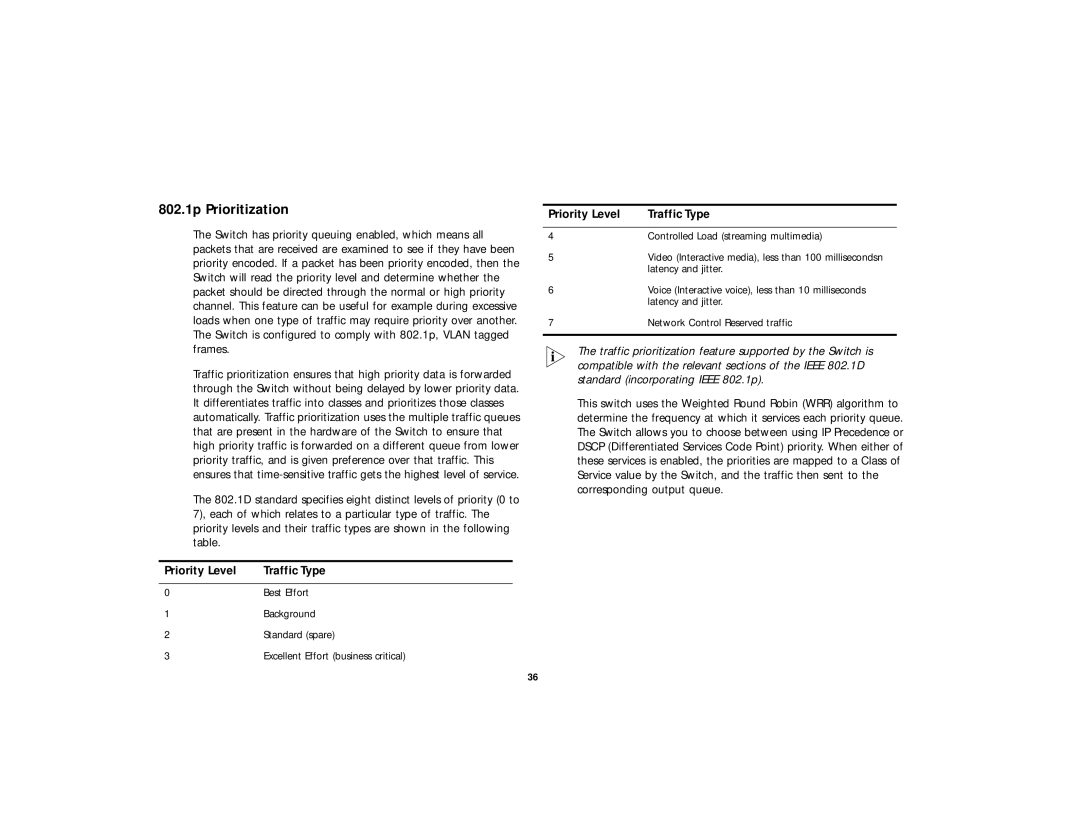
802.1p Prioritization
The Switch has priority queuing enabled, which means all packets that are received are examined to see if they have been priority encoded. If a packet has been priority encoded, then the Switch will read the priority level and determine whether the packet should be directed through the normal or high priority channel. This feature can be useful for example during excessive loads when one type of traffic may require priority over another. The Switch is configured to comply with 802.1p, VLAN tagged frames.
Traffic prioritization ensures that high priority data is forwarded through the Switch without being delayed by lower priority data. It differentiates traffic into classes and prioritizes those classes automatically. Traffic prioritization uses the multiple traffic queues that are present in the hardware of the Switch to ensure that high priority traffic is forwarded on a different queue from lower priority traffic, and is given preference over that traffic. This ensures that
The 802.1D standard specifies eight distinct levels of priority (0 to 7), each of which relates to a particular type of traffic. The priority levels and their traffic types are shown in the following table.
Priority Level | Traffic Type |
|
|
0 | Best Effort |
1 | Background |
2 | Standard (spare) |
3 | Excellent Effort (business critical) |
Priority Level | Traffic Type |
|
|
4 | Controlled Load (streaming multimedia) |
5 | Video (Interactive media), less than 100 millisecondsn |
| latency and jitter. |
6 | Voice (Interactive voice), less than 10 milliseconds |
| latency and jitter. |
7 | Network Control Reserved traffic |
|
|
The traffic prioritization feature supported by the Switch is compatible with the relevant sections of the IEEE 802.1D standard (incorporating IEEE 802.1p).
This switch uses the Weighted Round Robin (WRR) algorithm to determine the frequency at which it services each priority queue. The Switch allows you to choose between using IP Precedence or DSCP (Differentiated Services Code Point) priority. When either of these services is enabled, the priorities are mapped to a Class of Service value by the Switch, and the traffic then sent to the corresponding output queue.
36
